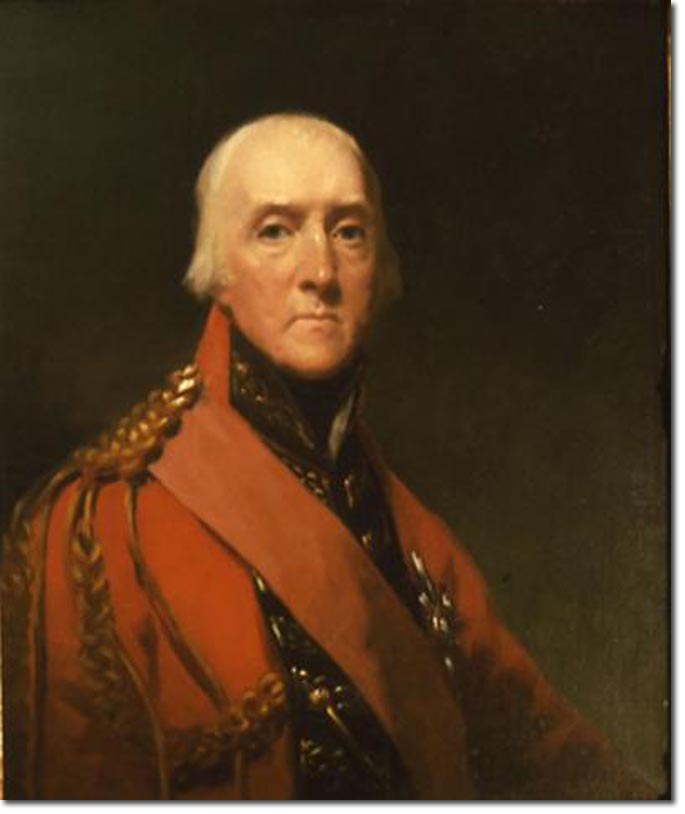|
|


|
|
David Dundas was born in 1735, the son of a Scottish merchant. He attended the RMA Woolwich but learned the art of surveying from his uncle Colonel David Watson and Major-General William Roy, founder of the Ordnance Survey. After Woolwich he joined the artillery in 1755 and then served in the Seven years War as an infantry officer in the 56th Foot. He exchanged to the 15th Light Dragoons and fought a Warburg in 1760. He rose to the rank of lieutentant-colonel in 1775 and was appointed QMG in Ireland in 1778. He was a keen advocate of officer training and wrote manuals like the 'Principles of Military Movements' in 1788. He was inspired by Frederick the Great and did not favour light infantry tactics. He commanded many operations in the French Revolutionary and Napoleonic Wars including the defence of Toulon in 1793, The capture of Corsica in 1794, at Willems in Flanders in May 1794, Geldermalsen in Jan 1795, and the Helder campaign of 1799.
He was Colonel of several regiments: 22nd Regiment 1791 - 1795, The 7th Light Dragoons 1795 - 1801, Scots Greys 1801 - 13, Colonel-in-Chief of the Rifle Brigade 1809 - 20, The King's Dragoon Guards 1813 - 20. He was married to Charlotte de Lancey but had no children. He died at the Royal Hospital Chelsea where he was governor from 1804 until his death on 18 Feb 1820. |
Armed Forces | Art and Culture | Articles | Biographies | Colonies | Discussion | Glossary | Home | Library | Links | Map Room | Sources and Media | Science and Technology | Search | Student Zone | Timelines | TV & Film | Wargames